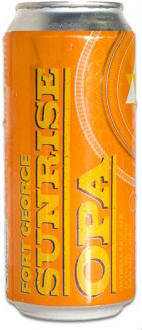ABV: 7.8%
IBU: 94
Serving Temp: 38F
Carbonation: 2.8 vol
Grade: B+
It took a full month from brewday before this beer was really ready to drink, but at that point it magically turned awesome. It started out thick, sweet and boozy, but as the flavors evolved and melded, the bitterness--both from the hops and the oak tannins--awoke and brought the beer back into line.
I really love the color of this beer. It's a brilliant deep dark red-brown, much like the Irish red I did for St Patrick's day, with a light beige head. A lot of light beige head. I need to re-balance my tap lines because every beer is coming out half foam, but that's not the beer's fault.
The aroma I'm not as in love with, and that is the beer's fault. It's got a rough edge to it, similar to what I find in Belgian beers (especially saisons and mixed-fermentation brett beers), or maybe soggy wood. It doesn't really detract from the beer if you don't sit there and sniff at it, but an enticing aroma is a great way to score early points with the drinker.
The flavor more than makes up for it. I feel like this is a malt forward beer, with an intense, deep malty-sweetness at it's heart and all the alcohol you would expect from such a strong beer. However, the hop bitterness is certainly up to the task of restoring balance, and last night I even had this beer described as particularly hoppy. And if there wasn't enough flavor happening already, there's also the oak doing its thing in the background. It's not especially bold, but it gives a bit of earthiness that complements the Chinook hops particularly well while melding nicely with the rich malt.
I have to say that since this beer turned the corner I'm really loving it. There was nothing overtly wrong with this beer, which is step one, but there is also a level of balance that is hard to achieve. Stone's recipe is a shining example of how finely balancing a few ingredients can achieve a superior product to more extravagant concoctions.
 Update 6/12/14: Last night I got to taste this beer head to head against the real Arrogant Bastard and Oaked Arrogant Bastard. Overall I'm surprised how close of a match it is. The color and aroma of all three are identical, the original AB had more hop flavor, but the vanillin in the oaked version seemed to smooth it out, bringing it much closer to my clone. Mine is still sweeter and boozier than the oaked beer which was a bummer; the Stone brew has a nice clean dry finish that I think we all preferred, but the bitterness lingers for a few seconds after the rest of the taste has dissipated, which some like (me) and others don't. I think switching to oak chips with their rougher character would go a long way to increasing the bitterness, but a little more bittering hops wouldn't be out of place. At 90 IBU (est.), there isn't a whole lot more room for iso-alpha acids, so an increase would run little risk of over-bittering. All-in-all, I'm happy with how this came out and would highly recommend this recipe as both an Oaked Arrogant Bastard clone and just a great beer.
Update 6/12/14: Last night I got to taste this beer head to head against the real Arrogant Bastard and Oaked Arrogant Bastard. Overall I'm surprised how close of a match it is. The color and aroma of all three are identical, the original AB had more hop flavor, but the vanillin in the oaked version seemed to smooth it out, bringing it much closer to my clone. Mine is still sweeter and boozier than the oaked beer which was a bummer; the Stone brew has a nice clean dry finish that I think we all preferred, but the bitterness lingers for a few seconds after the rest of the taste has dissipated, which some like (me) and others don't. I think switching to oak chips with their rougher character would go a long way to increasing the bitterness, but a little more bittering hops wouldn't be out of place. At 90 IBU (est.), there isn't a whole lot more room for iso-alpha acids, so an increase would run little risk of over-bittering. All-in-all, I'm happy with how this came out and would highly recommend this recipe as both an Oaked Arrogant Bastard clone and just a great beer.






